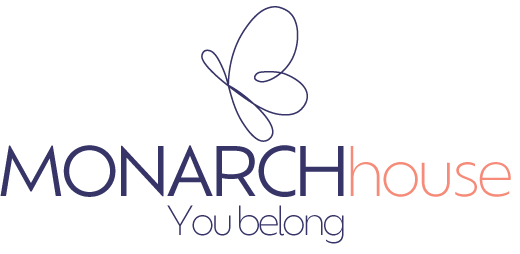Eight Teaching Methods for Children with Autism in Toronto That Accommodate Learning Differences
There are visual learners, auditory learners, and students that learn by doing. Every child is different in how they process new information. This difference, however, is magnified in children with autism. Teaching children with autism requires a lot of patience and understanding. One must adapt to their unique learning styles and needs. It’s not a one-size-fits all situation. Neurodivergence encompasses an incredibly wide range of challenges and unique abilities. So a personalized approach is essential. At Monarch House, we can help your child with the building of their individualized education plans so they are sure to get the attention they need while at school.
Here are eight useful teaching methods customizable to help accommodate the learning differences of children with autism in Toronto.
- 1. Making Use Of Visual Supports
Another method of teaching is seeing. Visual supports—such as pictographs, picture schedules, visual timers, and charts, can significantly enhance learning for children with autism. Visual aids help your child fall into a routine where they can understand and predict what will happen next. This comforting pattern helps to reduce anxiety and improve focus.
- Creating A Structured Environment
Having a designated place of learning can go a long way. A structured classroom environment with clear, consistent routines can help your neurodivergent child feel more secure. This allows them to focus uninterrupted. Again, building new rituals and routines is huge. Work with the counsellors and therapists at Monarch House for help in creating a predictable schedule at school, with designated areas for specific activities. One example is using labeled bins and organized spaces to help maintain order. If everyone involved is mindful of minimizing distractions and fostering a sense of stability, your child will thrive.
- Being Cognizant Of Sensory Issues
For some children, it’s easy to process new information under the dizzying brightness of fluorescent lights or the distracting din of other children in the hall. This bombardment can be too much for some people though. Children with autism often have sensory processing differences. So it is very important to be mindful of sensory strategies for them. Some steps might include taking sensory breaks in the sensory room. Alternatively, it’s advisable to have helpful sensory tools on hand, like weighted blankets, sunglasses, and noise-cancelling headphones. All of this can help manage sensory overload and improve focus. Overall, tailoring the sensory environment to individual needs can enhance learning and comfort.
- Mobilizing Choice Boards
Some children need to have more freedom and control in order to learn. For children with autism there is something called a “choice board.” These tools are designed to allow your child with autism the opportunity to explore different options for activities, tasks, or responses. At Monarch House, we have found that educators can promote autonomy in children and reduce their frustrations by using these boards. Simply by allowing them to select from a set of choices boards help to engage your child and serve to make learning more interactive and enjoyable.
- Embracing Technology-Assisted Learning
Some children learn best with the help of technological assistance. For children with autism, technology can provide new, innovative ways to support learning. Apps and educational software designed for ASD can provide visual learning experiences that are interactive and fun At home and at school, you can equip your child with things like tablets and Kinderboards. These can be used for social skills training, communication, and academic instruction. They come in many sizes and shapes, and are adjustable to diverse learning preferences.
- Maximizing Individualized Instruction
At Monarch House we can help you identify the specific circumstances for which your child needs to learn best. Our occupational and behavioiural therapy for children with autism helps to discover your child’s unique strengths and challenges. This is crucial to teaching individualized instruction. Once we have done that, the next step involves working on custom-built lessons to your child’s specific needs, interests, and learning style. We try to do this as comprehensively as possible, offering input as to adapting teaching methods, modifying materials, or setting personalized goals.
- Incorporating Peer Modeling
Some children learn best by copying the behaviour of others. They might mimic you, other caregivers, their siblings, or others in their environment. When it comes to peer modeling, children with autism look to other children about the same age to demonstrate appropriate behaviours and skills. At Monarch House’s social skills programs for young adults with autism your child will get a chance to practice this concept. By observing and interacting with their peers, your child will become comfortable with social interaction and get a good grasp on academic concepts, albeit in a naturalistic setting. Structured peer interactions can provide valuable social experiences and support.
- Building Behavioural Interventions
Sometimes a behavioural intervention is the best way to pinpoint your child’s unique learning style. Behavioural therapy for challenging behaviour focuses on understanding and addressing difficult phases through a systematic approach. Strategies such as Functional Behaviour Assessments (FBAs) help develop effective interventions and identify potential causes. Positive Behavioral Interventions and Supports (PBIS) promote desirable behaviours and create supportive learning environments.
You can’t teach a child with autism in the same way that you’d teach other children. What is essential for their social and academic success is simply different. Educators need to adapt teaching methods to accommodate their learning differences. As mentioned, there are a few ways that one can go about doing this: with the use of technology, or by using structured environments, incorporating visual supports, and working with occupational therapy and behavioural therapy. (This is where Monarch House can be a big help.) Holistically, we can pave the way for a more inclusive and effective learning experience for your child. Being cognizant of your child’s unique needs fosters a supportive and effective educational environment for them, allowing your child and other children with autism in Toronto to thrive.


